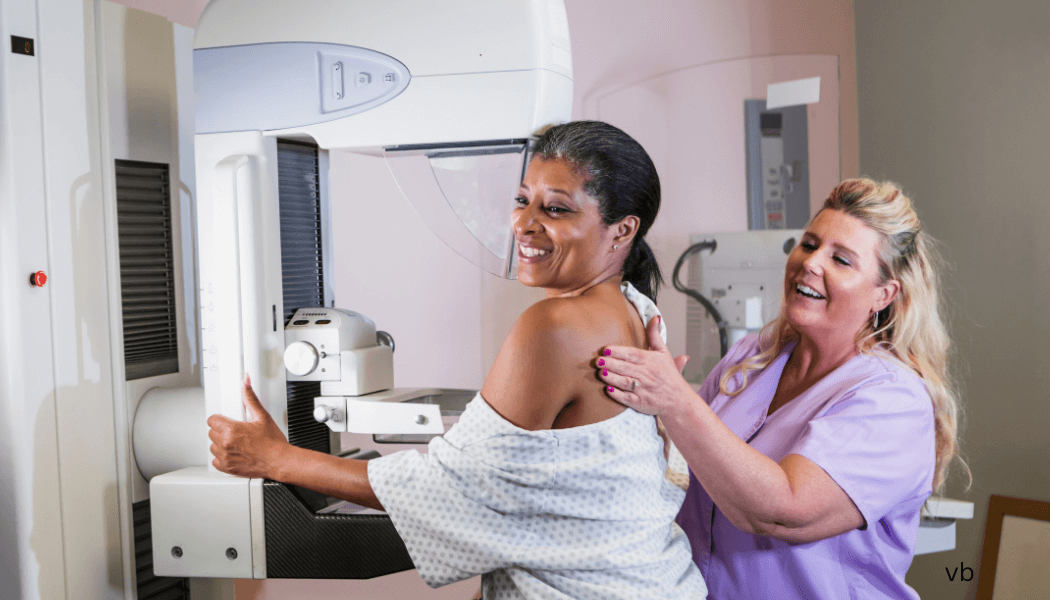Breast Cancer: Is It in Your Genes or Your Environment?

It's October...Breast Cancer Awareness Month, not pumpkin spice month! Let's talk about a topic that hits close to home for many of us: breast cancer. It's a topic that can stir up a lot of emotions and questions, especially when it comes to understanding the factors that contribute to its development.
Is breast cancer in your genes, or is it more influenced by your environment? In this article, we'll delve into the importance of breast cancer awareness and screenings, and explore the age-old debate of mammograms versus ultrasounds when it comes to detecting this prevalent disease.
The Importance of Breast Cancer Screening: Mammograms vs Ultrasounds
Breast cancer is a serious health concern, and early detection is key to successful treatment. Mammograms and ultrasounds are both important tools in breast cancer screening, but they serve slightly different purposes. Mammograms use low-dose X-rays to detect abnormalities in breast tissue, making them ideal for detecting small masses or calcifications that may indicate cancer. On the other hand, ultrasounds use sound waves to create an image of the breast tissue, which can be especially helpful for evaluating lumps that are found during a physical exam or mammogram. While mammograms are generally considered the gold standard for breast cancer screening due to their ability to detect small abnormalities early on, ultrasounds can provide additional information in certain cases, especially for women with dense breast tissue. Ultimately, both tests play important roles in ensuring early detection and improving outcomes for those at risk of developing breast cancer.
3D Mammograms: The Latest in Early Breast Cancer Detection
Many people wonder if having an ultrasound on their breasts is more effective than a mammogram for detecting breast cancer. While ultrasounds can be a useful tool in certain situations, when it comes to breast cancer screenings, mammograms are still the gold standard. Mammograms have been proven to detect breast cancer early, sometimes even before physical symptoms are present. The latest advancement in mammography technology is the 3D mammogram, also known as digital breast tomosynthesis.
- 3D mammograms provide a more detailed and comprehensive image of the breast tissue compared to traditional 2D mammograms.
- They can help radiologists better distinguish between normal and abnormal findings, reducing the need for additional imaging or biopsies.
- Studies have shown that 3D mammograms can detect more invasive cancers and reduce false positives, leading to earlier and more accurate diagnoses.
So, while having an ultrasound may be beneficial in certain situations, when it comes to early detection of breast cancer, 3D mammograms are the latest and most effective tool available. Remember, early detection is key in successfully treating breast cancer and improving outcomes.
At What Age Should You Have Your First Mammogram?
Deciding when to have your first mammogram can be a confusing decision. While the American Cancer Society recommends beginning annual mammograms at age 40, the U.S. Preventive Services Task Force suggests starting at age 50 for women with an average risk of breast cancer.
### Family History
If you have a family history of breast cancer, especially in a close relative like a mother or sister, you may need to begin screenings earlier. Genetic factors can significantly increase your risk, so it's crucial to consult with your healthcare provider about your family history and develop a personalized screening plan.
### Lifestyle Factors
Other lifestyle factors, such as obesity, alcohol consumption, and hormone replacement therapy, can also affect your risk of breast cancer. It's important to consider these factors when determining when to start regular screenings.
While having an ultrasound on your breasts may be recommended in certain situations, mammograms are still considered the gold standard for detecting breast cancer early. They can detect abnormalities that may not be visible on an ultrasound alone.
Is Breast Cancer Hereditary or Environmental? The Surprising Truth
While many people believe that breast cancer is solely a result of genetics, the truth is that only about 5-10% of breast cancer cases are hereditary. The majority of breast cancer cases are actually caused by environmental factors, such as diet, lifestyle choices, exposure to radiation, and hormonal imbalances. This is why regular screenings, like mammograms, are crucial in early detection and treatment of breast cancer. Mammograms can detect breast cancer in its early stages, when it is most treatable, and can help save lives. While ultrasounds can also be beneficial in detecting abnormalities in the breast tissue, mammograms are still considered the gold standard in breast cancer screenings due to their ability to detect small tumors that may not be visible on an ultrasound. It is important to understand the importance of regular screenings.
Breast Cancer Risk Factors: What Increases Your Chances of Developing Breast Cancer
When it comes to breast cancer, understanding the risk factors that can increase your chances of developing the disease is crucial for early detection and prevention. While genetics do play a role in breast cancer risk, there are also several environmental and lifestyle factors that can contribute to an increased likelihood of developing breast cancer.
### Genetics
Having a family history of breast cancer, especially in a first-degree relative such as a mother, sister, or daughter, can significantly increase your risk of developing the disease. Inherited gene mutations, such as BRCA1 and BRCA2, can also play a role in breast cancer risk.
### Lifestyle Factors
Maintaining a healthy lifestyle can help reduce your risk of developing breast cancer. Factors such as obesity, lack of physical activity, excessive alcohol consumption, and hormone replacement therapy can all increase your risk of developing the disease.
### Environmental Factors
Exposure to certain environmental toxins, such as radiation, can also increase your risk of developing breast cancer. Additionally, studies have shown that long-term exposure to estrogen-like chemicals, such as those found in some plastics, may also increase the risk of developing breast cancer.
By understanding and addressing these risk factors, you can take proactive steps to reduce your chances of developing breast cancer and prioritize regular screenings, such as mammograms, to detect any abnormalities early on.
10 Ways to Reduce Your Risk of Breast Cancer
Reducing your risk of breast cancer is an important aspect of maintaining your overall health. Here are 10 simple ways you can make positive changes in your lifestyle to lower your risk:
1. Maintaining a healthy weight through a balanced diet and regular exercise
2. Limiting alcohol consumption
3. Avoiding smoking and secondhand smoke
4. Being physically active for at least 30 minutes a day
5. Eating a diet rich in fruits, vegetables, and whole grains
6. Breastfeeding, if applicable
7. Limiting exposure to radiation and environmental pollutants
8. Getting regular exercise and staying physically active
9. Knowing your family history and talking to your healthcare provider about your risk
10. Regularly performing self-exams and scheduling mammograms as recommended by your doctor
By incorporating these simple lifestyle changes into your daily routine, you can take proactive steps to reduce your risk of developing breast cancer and promote overall well-being.
Conclusion
In the end, whether breast cancer is in your genes or influenced by your environment, the key takeaway is the importance of regular screenings and early detection. Mammograms and ultrasounds play a crucial role in detecting breast cancer at its earliest stages, increasing the chances of successful treatment and survival.
While genetics can play a role in breast cancer risk, environmental factors also play a significant role. It's essential to be proactive about your health and stay informed about the latest screening recommendations for your age and risk factors.
Remember, knowledge is power when it comes to breast cancer, so stay informed, get regular screenings, and take control of your health. By being proactive and vigilant, you can increase your chances of detecting breast cancer early and potentially saving lives.



